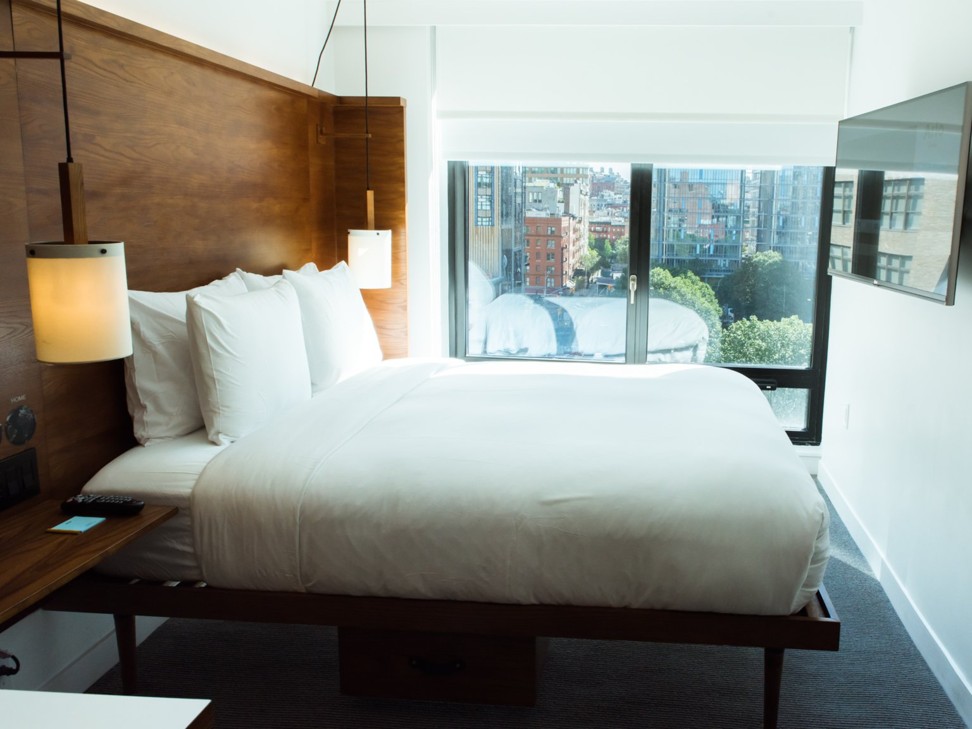Why are luxury hotels going lean for the Instagram effect?

There is a new look among some luxury hotels, and it is a whole lot smaller – and barer – than it used to be.
It is part of a move towards “lean luxury”, Quartzy’s Rosie Spinks wrote, and while the pared-down room sizes and simplified amenities are cost-conscious decisions, there is another factor at play in the change.
“By cutting back on both the size of the rooms … and some of the more costly amenities of a traditional luxury hotel, hospitality companies can offer better locations, a design-led sensibility with higher quality materials, and an altogether elevated experience – for a pretty damn reasonable price,” Spinks reported. “They also tend to look way better on Instagram.”
The goal with lean luxury hotels, Spinks continued, is to be “far more functional and user-experience-oriented than a standard grand hotel room”.
Instagram effect is clear
The effect Instagram is having on luxury hotels isn’t that surprising when you consider the way it’s changed the way people, many of them millennials, travel at large. As Robb Report previously wrote, people are planning trips around the world specifically for Instagram photos; similarly, some previously under-the-radar destinations – like the blue city in Morocco – are seeing upticks in tourism because they are so Instagram-friendly.

Spinks writes that “clean lines, minimal fussiness, and functional design lead the ethos” when it comes to the look of lean luxury hotels. Much like the New York City penthouse that was designed as a backdrop for Instagram influencers, hotels are being designed with photography uppermost in mind.
In an era where Instagram exposure can bring in enough traction that a luxe hotel in Switzerland was able to eliminate its marketing budget, it’s a logical point for hotels to turn their focus towards.
One such hotel featuring pared-down room aesthetics is Arlo Hotel, a microhotel in New York’s SoHo area. Business Insider’s Katie Warren visited the hotel in 2018 and found that the careful design of the 150 sq ft rooms kept them from feeling cramped.
“The rooms were definitely small, but for someone who doesn’t plan to spend much time in their hotel room and isn’t travelling with multiple large pieces of luggage, I think it would be a fun and memorable place to stay,” she wrote. Despite its tiny rooms, the hotel is still on the expensive side: Rates start around US$330, compared to the New York average of US$216.
The other end of the luxury hotel spectrum
That is not to say that over-the-top amenities are disappearing from hotels. Lean luxury hotels aren’t necessarily replacing the traditional luxury hotel – instead, they’re opening up a new type of look at the other end of the spectrum.
Some hotels are pivoting towards customised amenities that personalise a guest’s stay, primarily in the form of hotel staff remembering guests’ food, drink and product preferences, and delivering those on arrival.
Others are still leaning into the traditional vision of luxury and all its over-the-top trappings. In December, Business Insider’s Harrison Jacobs visited the Burj Al Arab in Dubai, a US$1 billion hotel that has been described as the world’s best and “the world’s first seven-star hotel”. Every room is a duplex suite that comes with a butler, an extensive mini bar, fresh fruit on arrival and a luxe mattress that can cost US$15,000.
“I’ve stayed at many five-star hotels”, Jacobs wrote. “The Burj is undoubtedly a class above them all.”
Want more stories like this? Sign up here. Follow STYLE on Facebook, Instagram and Twitter
This article originally appeared on Business Insider.

- Hotels are being designed with photography uppermost in mind